v5.2.x Next Limit Maxwell | SketchUp
EDIT in Admin Edit in WP
Downloads
Download demos and trial versions, product documentation, free presets and more.
You may download a free Demo after logging in.
High-quality, photorealistic 3D rendering for architecture and product design
Next Limit Maxwell | SketchUp offers seamless integration with SketchUp Make and Pro. This product has been designed for rendering in SketchUp with a Maxwell toolbar. It brings you advanced Maxwell Render technology in a simple package.
Maxwell for SketchUp is really simple to set-up – just install the plugin and you’re off.
Maxwell SketchUp offers seamless integration with SketchUp Make and Pro, allowing you to work comfortably within the SketchUp interface. This product has been specifically designed for rendering in SketchUp with a simple yet comprehensive Maxwell toolbar. It brings you advanced Maxwell Render technology in a simple, self-contained package.
Ground Truth Quality
Maxwell is all about quality. Period. This has been our sacred mantra for most than 15 years of development. Our secret sauce is a physically-correct unbiased spectral engine, which produces not only beautiful images but also lighting-accurate simulations. In fact, Maxwell is considered the ground-truth in rendering and CGI production. We strive to inspire others, and you inspire us.
What is Maxwell Render?
Maxwell Render™ is a rendering engine based on the mathematical equations governing light transport. In other words, Next Limit derived all elements, such as emitters, materials, and cameras, from physically accurate models. Maxwell Render is unbiased, so no tricks are used to calculate the lighting solution in every pixel of a scene. The result will always be a correct solution, as it would be in the real world. Maxwell Render can fully capture all light interactions between all elements in a scene. Not only that, Maxwell performs all lighting calculations using spectral information and high dynamic range data.
Due to its very nature, Maxwell Render enables users to create accurate and extremely realistic images. Maxwell Render is a recognized standard in architectural visualization, product design, jewelry, film production, scientific research, and other high-end rendering markets, and the leader in render quality.
Maxwell Render is a rendering engine that accepts models and scenes created in 3D or CAD applications. In addition, Maxwell Render plug-in directly supports several of these applications. Use others in conjunction with Maxwell Render. Simply import the geometry into Maxwell Studio, a component of the software.
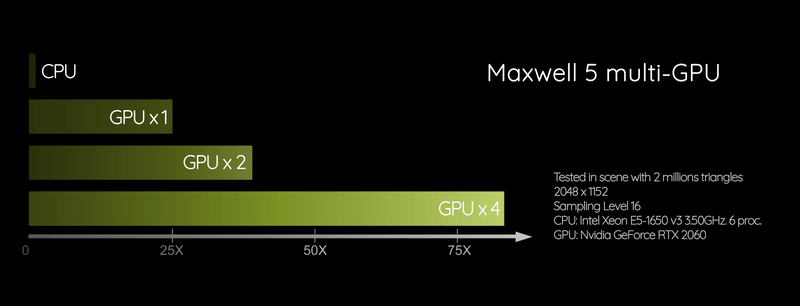
Multi-GPU Speed
If you have ever heard that Maxwell is slow. Well, it was. Our commitment to developing the most accurate render engine on the market wasn’t negotiable. The story has changed in Maxwell 5. A fully rewritten multi-GPU core now delivers final results in minutes. So, you get accurate previews in seconds, keeping physical accuracy intact. With multiple GPUs working in parallel you’ll get an unprecedented Maxwell experience. To put it another way, with Maxwell 5, time is now in your hands.

Cloud Speed
The new Cloud Render service allows you to access the most powerful machines available in the cloud (up to 96 cores) speeding up the render process and thus improving your productivity. Easily dispatch Cloud Render Jobs from Maxwell Studio and the plugins, freeing the local computer from high CPU loads. Cloud Render helps you optimize your time and resources more efficiently.
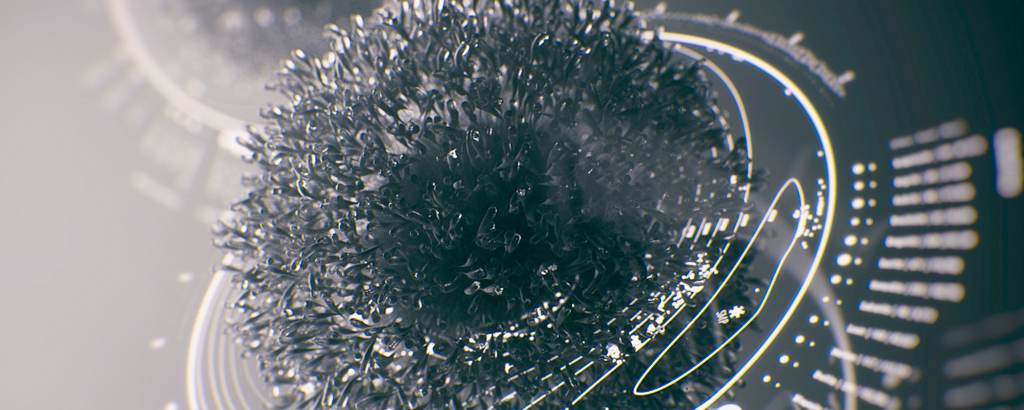
Next Limit Maxwell | SketchUp Integrations
Maxwell 5 is seamlessly integrated into most of the major 3D/CAD software solutions such as Rhino, SketchUp, Autodesk Maya, Autodesk 3ds Max, ArchiCAD, Cinema 4D, and formZ. As an alternative, the standalone Maxwell Studio offers an independent production/rendering environment to create, edit, and render Maxwell scenes. In addition, you get Render nodes and network tools for advanced deployments. Maxwell is available for Windows, macOS, and Linux.
To summarize, Maxwell Integrations offer an easy workflow that allows you to compose, edit, and render your scenes from a simple toolbar inside your usual 3D application.
Maxwell Integrations come with the full Maxwell toolkit, including the following.
- Maxwell Production Engine
- Multilight™
- FIRE (interactive preview engine)
- Materials Editor
- Real camera model
- Network tools
Next Limit Maxwell | SketchUp Manual
Need extra render nodes?
Indeed, check out Next Limit Maxwell | Nodes.
Description
New Features in Maxwell 5
New Multi-GPU Engine
Fully rewritten MULTI-GPU engine provides more than 50x speed-up compared with a high-end CPU, preserving the Maxwell quality and delivering results in minutes or even seconds.
Cloud Render Service. Always ready for you.
Fully rewritten MULTI-GPU engine provides more than 50x speed-up compared with a high-end CPU, preserving the Maxwell quality and delivering results in minutes or even seconds.
Additive Materials in GPU
Materials with additive layers are now GPU-ready, increasing compatibility with the majority of Maxwell materials.
V-Ray Scene Import
Import native V-Ray scenes and convert them to Maxwell automatically. Only supported in Maxwell Studio. Plugin integrations coming soon.
Improved Interactivity and Stability
FIRE (Fast Interactive Render) is now faster and optimized to update instantly and reflect the changes in the scene, providing a great interactive workflow.
Procedural Textures
Add more variability and realism to your scene by randomizing texture properties automatically across multiple objects or tiled surfaces.
Light Groups (Multilight)
Lights can now be grouped and controlled like single emitters in the Multilight ’emixer’. Useful to keep MXI files more compact, reduce memory footprint and decrease complexity in scenes with lots of emitters.
Support for High Resolution (4K) Screens in both Render and Studio
Now Studio and Maxwell Render interface are able to accommodate to high resolution displays like 4K or higher.
Improved Workflow
Nested references allow for better management of large scenes with deep hierarchies, optimizing file sizes. Dependencies are now searched in several subfolder levels, streamlining assets management.
Maxwell Essentials
 Unsurpassed Realism
Unsurpassed Realism
Unbiased spectral ray-tracing designed to simulate light and materials exactly as it behaves in the real world. No tricks. Just accurate real-world physics.
 Interactive
Interactive
Maxwell’s interactive engine gives you immediate feedback for adjustments to lighting, materials and camera settings.
 Thousands of Materials
Thousands of Materials
Hundreds of online materials in our community based library. Materials are based on real optical properties, creating unrivalled realism. A Material assistant will help you create perfectly optimized materials in just seconds!
 Denoiser
Denoiser
The Denoiser feature provides faster results (2x to 6x), obtaining higher quality at lower sampling level.
Multilight
Light intensities can be changed during and after rendering, saving out as many images as needed – all from just a single render.
 Realistic Camera Model
Realistic Camera Model
Set optical properties such as f-stop, focal length, shutter speed, ISO, film size, etc. Get DOF, bokeh, scattering and exposure effects to boost realism.
 Accurate 3D Motion Blur
Accurate 3D Motion Blur
Accurate 3D motion blur can handle unlimited sub-steps, and can be set for both a still camera to mimic long exposure effects such as trails of light, or a film camera to show the motion blur effect of fast moving objects.
 Physical Sky
Physical Sky
Wide range of real-life, physically-correct variables to control the look of the sky and lighting, including Earth location, time, sun’s aspect, and atmosphere.
 Volumetrics
Volumetrics
Create large atmospheric haze effects or thick fog, compatible with particles files in several formats including RealFlow .bin, OpenVDB and density fields/voxels directly from Maya and Houdini.
 Maxwell Sea
Maxwell Sea
Create realistic ocean surfaces and waves controlling water depth and surface dimensions. From swimming pools to open ocean.
 Hair
Hair
Photoreal hair rendering, compatible with Maya Shave and a Haircut, Maya hair, 3ds Max hair, Cinema 4D hair, and Ornatrix. Any Maxwell material can be applied.
 Grass and Fur
Grass and Fur
Create photoreal grass or fur on a selected piece of geometry. Designed to offer maximum control and impeccable detail.
Advanced Features
Realflow Import
Render your RealFlow™ particles directly with Maxwell Render, meshing the point cloud at render time.
Pixar Open Subdiv
The Pixar Open Subdiv feature subdivides object surfaces only at render time – saving space and data transfer.
Network Rendering
Render one image using all of your computers, or set each computer to render one animation frame. Complete control and flexibility.
Memory Saving Instances
Instances are a great way to save memory when rendering. They are great for creating vegetation, bricks, furniture or any other extensively repeated geometry in your scene.
Channels
Alpha, Z-buffer, Shadow, Material-Id, Object-Id, Motion Vector, Roughness, Fresnel, Normals, etc. Create unlimited ‘layers’ of custom alphas and add any object(s) to those layers to isolate them.
Extra Sampling
Define a specific area of your image to be rendered to a higher sampling level than the rest – dedicating all render power to the areas where it is most needed.
Deep Compositing
Deep image format stores color as well as depth information per pixel, making it much easier to composite rendered objects together as well as eliminating troublesome edge artefacts. Export to EXR or DTEX formats, in rgba or alpha.
Python Scripting
The Python SDK allows you to write custom tools such as extracting certain channels from an MXI sequence, creating materials on the fly, network render management and much more.
Alembic
The Alembic file format allows for very efficient storage of geometry and other scene data, which can now be referenced directly in Maxwell. Support for Alembic includes static and animated geometry as well as particles. It also works with the Exocortex CRATE suite of Alembic plugins.
System Requirements
Compatibility
- SketchUp: 2017 – 2024* (if you are using 2019 on Mac, it is required to be 2019.2 or newer)
- Maxwell Render 5
- Windows Server 2008 R2 SP1, Windows 7, 8, 8.1, Windows Server 2012, Windows 10, Windows Server 2016, Windows 11.
- MacOS 10.11 (El Capitan), 10.12 (Sierra), 10.13 (High Sierra), 10.14 (Mojave), 10.15 (Catalina), 11 (Big Sur), 12 (Monterey), 13 (Ventura) and 14 (Sonoma).
GPU engine
- Graphics cards that support CUDA platform (Nvidia).
- Maxwell and Pascal architectures are supported (for reference you can check this link); it could work on older architectures but it could be unstable and the experience won’t be good.
Change Log
Version v5.2.4 – 29 Apr 2024
COMPATIBILITY:
Added support for SketchUp 2024
Version v5.2.3 – 06 Mar 2023
COMPATIBILITY:
Added support for SketchUp 2023
FIXES:
Updated the library file libeay32.dll in Maxwell Render installation.
Version v5.2.2 – 24 Feb 2022
COMPATIBILITY:
Added support for SketchUp 2022
Version v5.2.1 – 06 Jul 2021
COMPATIBILITY:
Built for Maxwell Render 5.2.1.49
IMPROVEMENTS:
The gizmo of the Spot, Projector and IES lights are now a bit different so the origin of the light coincides with the apex of the spot cone, the projector pyramid or the first disc of the IES gizmo (it was not like that before).
The HDRI, Projector and IES lights are now created with a sample file assigned by default so they work right away.
Maxwell Render denoiser “Feature Influence” parameter default value is now 0.25 so it better preserves the texture details.
FIXES:
The default preview scene was missing; it now shows the right one.
Maxwell v5.2.0.45 Update – March 9, 2021
Maxwell
Improvements
- Denoiser’s new approach. Better integration in the render engine. One-pass render, multi-layered MXI, the Denoiser image is treated as another channel and is included in the MXI file, so its information does not get lost; better memory management because of tiling options and new fine-tuning options to control the Denoiser strength.
- Denoiser parameters exposed:
- Tiling.
- Maximum Tile Size.
- Color Influence (kc1).
- Color Influence (kc2).
- Feature Influence (kf).
- Final Pass Strength (kc4).
- Filter Radius.
- Firefly Remover.
- A new modal panel shows up while the render is being re-denoised.
- New “refresh” controls in the render viewport to refresh the render, the denoiser channel or both.
- New option for Channel controls positions in Preferences > Appearance (Bottom-Left and Bottom-Right). Shortcuts on Windows: Ctrl + Alt + NumPad 1 and 2. Shortcuts on MacOS: Option + Command + NumPad 1 and 2.
- New option for Refresh controls positions in Preferences > Appearance (Top-Left, Top-Right, Bottom-Left and Bottom-Right). Shortcuts on Windows: Ctrl + Alt + NumPad 4, 5, 7 and 8. Shortcuts on MacOS: Option + Command + NumPad 4, 5, 7 and 8.
Changes
- Command line parameter -denoise removed. To activate the denoiser through the command line the user must enable the denoiser channel. Example: -channel:denoiser,on,8,png
- The Denoiser image output path field has been removed from the panel as now it’s treated as any other channel; thus, the denoised image will be saved next to the main render and with the same name plus _denoiser.
- Denoiser auto-configuration now sets Position channel in world coordinates, and Normals channel in camera coordinates by default. If the user enabled any of those channels, denoiser auto-configuration will respect the channels’ configuration set by the user.
- The Denoiser will be applied in “preview quality” for intermediate SLs until SL 12. For SL 12 and beyond the denoiser runs in “final quality”, as well as for the last denoiser update when the render ends, no matter the final SL.
- Default Priority set to “Below Normal”.
- The mximerge application -coopdenoiser command-line flag has been removed.
- The Draft engine disables extra-sampling and continues instead of failing when extra-samping is enabled.
- Process Priority becomes an application setting, still overridable by command-line parameter -p or -priority.
- Deprecated command line parameter -channels removed.
Fixes
- Wrong data issues with TIFF images and LZW compression on Linux and Windows platforms (including Maxwell Cloud nodes).
- Maxwell Render never ended in nogui mode if the denoiser was active, and a forbidden denoiser parameters combination was set by mistake in the MXS: auto-configure:fast + shadow-denoiser:on.
- BSDF blending proportions of materials could not be accurate when the material was applied to an object with object opacity different than 100%.
- Intensity correction was not correct for some additive materials.
- Crash with reflectance channel + material with reflectance textures with no tiling.
- The License Activator on Mac was copying the floating licenses in the wrong folder.
- (MacOS only) Quicklook had a memory leak.
- In FIRE CPU (CPU Draft engine) Spot Lights in projector mode were not working.
Known Issues
- MaxwellScatter extension removes MaxwellScatter extension from the scattered objects (if they have).
- Benchwell stops sometimes before the benchmark test has finished. We don’t allow uploading the results in that case.
Maxwell GPU
New Features
- NVIDIA Ampere graphics cards support.
- Multilight is now supported by the GPU engine.
- Multi-GPU dynamic balance. Fewer samples are expected from cards that had less performance in past rendering passes.
- Emitter + BSDF now works in GPU. It is restricted to one emitter per material.
- Samples rebalance: Threads of one pixel can help other pixels if they need to. This helps that the image sampling level is more homogeneous. This can make that, in some scenes, Maxwell will require more time to reach the same SL, but more complicated parts of the image will have less noise at the same SL. Also, less computing power will be invested in easy parts, like the sky. In general, the computing power will be used more efficiently.
Improvements
- Speed improvement in multi-gpu.
- Improved the way in how certain calculations are done within the GPU engine that should help minimize certain precision issues regarding two surfaces being too close to each other and far away from the camera. (i.e. putting an emitter too close behind an AGS could make the rays skip the emitter if they are far from the center of the scene).
- Render Region and Blow-up Region are not supported in the GPU engine, now the region is reset to Full Frame before the render starts.
Changes
- Upgrade to CUDA 11.1. Minimum NVIDIA drivers required:
- Windows: 456.38.
- Linux: 455.23.
- CUDA 11 drops support for the following operating systems:
- Windows 7.
- Windows 8.
- Windows Server 2012 R2.
- CUDA 11 drops support for Kepler 3.0 and 3.2 graphics cards (https://en.wikipedia.org/wiki/CUDA):
- GeForce GTX 770, GeForce GTX 760, GeForce GT 740, GeForce GTX 690, GeForce GTX 680, GeForce GTX 670, GeForce GTX 660 Ti, GeForce GTX 660, GeForce GTX 650 Ti BOOST, GeForce GTX 650 Ti, GeForce GTX 650, GeForce GTX 880M, GeForce GTX 780M, GeForce GTX 770M, GeForce GTX 765M, GeForce GTX 760M, GeForce GTX 680MX, GeForce GTX 680M, GeForce GTX 675MX, GeForce GTX 670MX, GeForce GTX 660M, GeForce GT 750M, GeForce GT 650M, GeForce GT 745M, GeForce GT 645M, GeForce GT 740M, GeForce GT 730M, GeForce GT 640M, GeForce GT 640M LE, GeForce GT 735M, GeForce GT 730M, Quadro K5000, Quadro K4200, Quadro K4000, Quadro K2000, Quadro K2000D, Quadro K600, Quadro K420,Quadro K500M, Quadro K510M, Quadro K610M, Quadro K1000M, Quadro K2000M, Quadro K1100M, Quadro K2100M, Quadro K3000M, Quadro K3100M, Quadro K4000M, Quadro K5000M, Quadro K4100M, Quadro K5100M, NVS 510, Quadro 410, Tesla K10, GRID K340, GRID K520, GRID K2.
- In order to keep compatibility for the GPU engine with Windows 7/8/Server 2012 R2, for Maxwell Render 5.2.0 and future Maxwell 5 versions, Maxwell Render, Maxwell Studio and the plug-ins will be available in two flavors for Windows:
- Windows 7 installer. CUDA 10 based, which supports the following NVIDIA architectures:
- Maxwell.
- Pascal.
- Volta.
- Turing.
- Windows 10 installer. CUDA 11 based, which supports the following NVIDIA architectures:
- Maxwell.
- Pascal.
- Volta.
- Turing.
- Ampere.
- Windows 7 installer. CUDA 10 based, which supports the following NVIDIA architectures:
Fixes
- GPU statistics did not show correct render progress.
- GPU stopped at a much higher SL than requested.
- GPU crashed when having more than one emitter per material.
- GPU ghost bsdf (Transmittance white + Nd = 1 + K = 0) was rendering as opaque if the material had more than one bsdf and the attenuation was set to 1 nm.
- BSDF blending proportions of materials might not be accurate when the material was applied to an object with object opacity different than 100%.
- Intensity correction was not correct for some additive materials.
- MXI files generated by the GPU engine could not be merged.
- Tiling X or Y with global map did not work properly in the GPU engine.
- Maxwell froze with instances to nulls with emitter materials.
- The GPU engine couldn’t find some textures on some pack & go conditions.
- The GPU engine could crash using multi-gpu with IBL on consecutive renders with different resolutions.
Maxwell Studio
New Features
Added the new Denoiser options to the Attributes panel > Render Options > Scene tab > Denoiser section.
- Tiling and Max Tile Size
- Fine-tuning options: Color Influence 1 and 2, Feature Influence, Final Pass, Filter Radius and Firefly Remover.
Improvements
- Improved the readability of the text fields when editing them.
- When activating the material preview auto-update, the preview is refreshed (FIRE will be stopped to avoid conflicts).UI minor improvements.
Changes
- FIRE default parameters changed to Quality 4 and SL 12.
- Default Priority set to “Below Normal”.
Fixes
- Crash with random uvs extension and displacement.
- The Global map did not show properly in the viewport.
- The Lat-Long Stereo camera creation triggered an error: “separation_map.png” not found.
- The Fish Stereo camera creation triggered several errors: “separation_map.png/turn_map.png” not found.
- FIRE did not update properly on Lat-Long/Fish Stereo parameters change.
- Studio installer was not able to detect and uninstall a previous Maxwell Render installation.
- Channels Output Mode “Separate/Embedded” option was not being written to the MXS file.
- Random crash starting Studio on macOS.
Known Issues
- Resources Browser makes Studio crash on widget resize in some rare cases.
- Studio won’t work on a remote desktop (Linux host).
MXED
New Features
- New Substance Designer assistant. It allows loading .sbsar files and editing their parameters directly from Maxwell. The material is automatically translated internally to a Maxwell material or you can permanently convert it to a Custom Maxwell material.
Network
Improvements
- The Cloud jobs now show in the Name field how many renders it has.
- Cloud jobs rows with one render show the current/target SL data of the render.
- The Maxwell Cloud ignores Search Paths in the MXS to improve dependency search time.
- Cloud job wizard now allows the user to set channels in the render parameters panel.
- The Network Monitor shows a “New Version” message on Maxwell Cloud updates when the user logs in.
Changes
- The “forgot password” link wasn’t working properly, now it opens portal.nextlimit.com/login/remember directly in the default internet browser.
Fixes
- Cloud job resolucion with locked pixel aspect was not taking into account the original output resolution of the scene and used 4:3 always instead.
- Linux: Wrong file type filter on missing dependencies dialog when sending a cloud job.
- There were some missing render parameters in the network job wizard UI: Render Engine, Motion Blur, Displacement and Dispersion.
- The user couldn’t log-in in Maxwell Cloud through Network Monitor if the password contained the character “%”.
SDK
Changes
- Cmaxwell::getRenderParameter/setRenderParameter new signature. The old one remains for backward compatibility.
- New maxwellcommon.h header.
Maxwell 5.1 – What’s New – May 13th 2020
New features
- New Benchwell tools for CPU and GPU benchmarking with online live charts. You can access them from the Tools menu from Maxwell Render.
Improvements
- Asset Reference extension object: assimp library upgraded to 5.0.0 so it gives better support for all the file formats.
- Upgraded Xrite SDK to 1.7.1 so it gives better support for the latest materials.
Known Issues
- Wrong data issues with TIFF images and LZW compression in Linux platforms (including Maxwell Cloud nodes).
- MaxwellScatter extension removes MaxwellScatter extension from the scattered objects (if they have).
- On Mac, Xrite AxF materials make Maxwell close if they are used in the scene.
Fixes
- The bump map and the normal map were being affected by geometry’s transformations in some situations.
- Crash computing denoised image in intermediate steps during render.
- Launching a render with CPU, stopping, changing to GPU and restarting produced an error when starting the voxelization.
- The RLM could not be installed on MacOS Catalina.
- The Random Color procedural texture always returned the same color if the object ID color saturation was 255.
- The command line parameter -mintime was not only setting a minimum time between each time Maxwell saved output images to disk but was forcing a maximum time too.
- Maxwell CPU failed to render correctly texture channels higher than 0 if channel 0 was not used.
Maxwell GPU
New features
- Benchwell tool.
- Coatings are now supported in the GPU engine.
Fixes
- Wrong textures could be accessed on materials in different circumstances.
- Several fixes in dielectric (transparent) materials.
- Bad interactions between emitters and clipmaps who could make light rays turn black (with all emitters) or generate extremely intense fireflies (IES).
- The bump map and the normal map were being affected by geometry’s transformations in some situations.
- Some scenes with hidden emitters rendered to black in FIRE GPU and could eventually crash. In general, this affected the scenes with hidden objects.
- The GPU engine rendered black if no channels were selected (including the Render channel). This has been forced to behave as in the CPU engine and render the Render channel anyway.
- The MXI file was saved twice after the render ended.
- The time between SL updates eventually became extremely short.
- The scenes with procedural geometry (grass, sea, etc.) did not render, even if they were hidden.
- The command line option “-removegpus” didn’t work as intended.
- No tiling texture option still produced tiling in the negative direction of the UV axis.
- Non-coherent shading on 2 BSDFs on the same additive layer.
- Maxwell crashed if Fire GPU was active when we apply a material with a coating.
- A spotlight rendered with GPU could show a black hexagon in the light direction.
Improvements
- The maximum number of ray bounces is now set to the same as the CPU production value.
- Much better support for transparent materials:
- The attenuation color and behavior now matches the CPU engine result.
- The transparent materials now produce caustics.
- The transparent materials now do not produce incorrect white fireflies.
- Improvements in memory management.
Known Issues
- Dielectrics materials don’t behave as intended in some scenes.
What’s new in Version 5.0.2 – 06 Feb 2020
COMPATIBILITY:
- Built for Maxwell Render version 5.0.2.21
- Added support for SketchUp 2020
IMPROVEMENTS:
- Added Check for Updates functionality.
- Added the check for updates option, Cloud Render and some missing light entities in the Maxwell menu.
- Now, when a new light object is created from the toolbar, the Scene Manager opens in the Materials tab so you can modify its properties.
- Now the instances of the Maxwell lights components (when dragging from the components list) also have the same emitter material applied and they actually work as instances (changes in their material affect all the instances).
FIXES:
- Fire now stops instead of restarting when the scene is exported to Maxwell, Studio, Cloud, Network or to a file.
- Importing assets from the 3D warehouse could crash SketchUp when the plugin was installed; in most of the cases this will work fine now but the fix is not 100% error-free (In any case, Trimble suggests the following: “Generally it is advisable to download components from the Warehouse into a separate blank file before you add them to your main project file. That gives you an opportunity to examine them to make sure they are OK. Also, you can get rid of unneeded geometry, materials, and layers before adding all that stuff to your main file.” You can do this from Window > Model Info > Statistics > Purge Unused and Fix Problems. If it still crashes with Maxwell extension active, you can disable it, import and purge, save the file and import in the main scene; then it will work in Maxwell.
- The plugin on Mac added one extra black material to the material list when adding the first Maxwell light from the toolbar.
- The DOF tool didn’t update fstop or shutter camera values.
What’s new in Version 5.0.1 – 20 Nov 2019
COMPATIBILITY
- Built with Maxwell 5.0.1.16 SDK
FIXES
- The installer for MacOS sometimes didn’t ask for write permission in Finder.
- Improved notarization for MacOS Catalina.
- Some context menu features were missing (UV Coordinates, MXS Reference,…)
- Hide from Scene (main hide flag) was missing from the Object Properties panel.
CHANGES
- Updated the links to the new documentation in the toolbar and Fire window.
KNOWN ISSUES
- SketchUp updated 3D warehouse to 2.0. Importing objects from it may crash SketchUp.
- Importing a material from the online gallery may add an additional black material on the Mac version.
What’s new in Version 5.0.0 – 30 Oct 2019
Compatibility
- Windows: Windows 7 (Until January 2020, when Microsoft will stop supporting it) and Windows 10 both with 64 bit SO (x64).
- MacOs: MacOS 10.12 (Sierra), 10.13 (High Sierra), 10.14 (Mojave) and 10.15 (Catalina)
- Dropped support for MacOS 10.11 (El Capitan) as it’s not supported by SketchUp.
New features
- New GUI Fire window design.
- New Maxwell 5 icons.
- New Maxwell Cloud feature.
- Added support for Multilight Groups in emitters.
- Added Multi-GPU selection in Scene Manager > Output tab > Engine panel when selected GPU as Engine.
- Added new Light Creation tools in the main Toolbar to ease the light creation; these tools include the creation of:
- Area rectangular emitters
- HDRI emitters
- Omni emitters
- Spot emitters
- Image projectors
- IES emitter
NOTE: It is not recommended to scale spots, projectors or IES emitter non-uniformly as the results can be odd. There’s no problem in scaling them uniformly.
Changes
- Moved Hide features from the right-click context menu to Object Properties panel when an object is selected.
Tutorials

Maxwell 5.2 - New Denoiser is Kicking SSS
Artem Paramonov explains the new denoiser in Next Limit Maxwell 5.2 and how it works with Subsurface Scattering, or SSS. Try Maxwell for free.
More...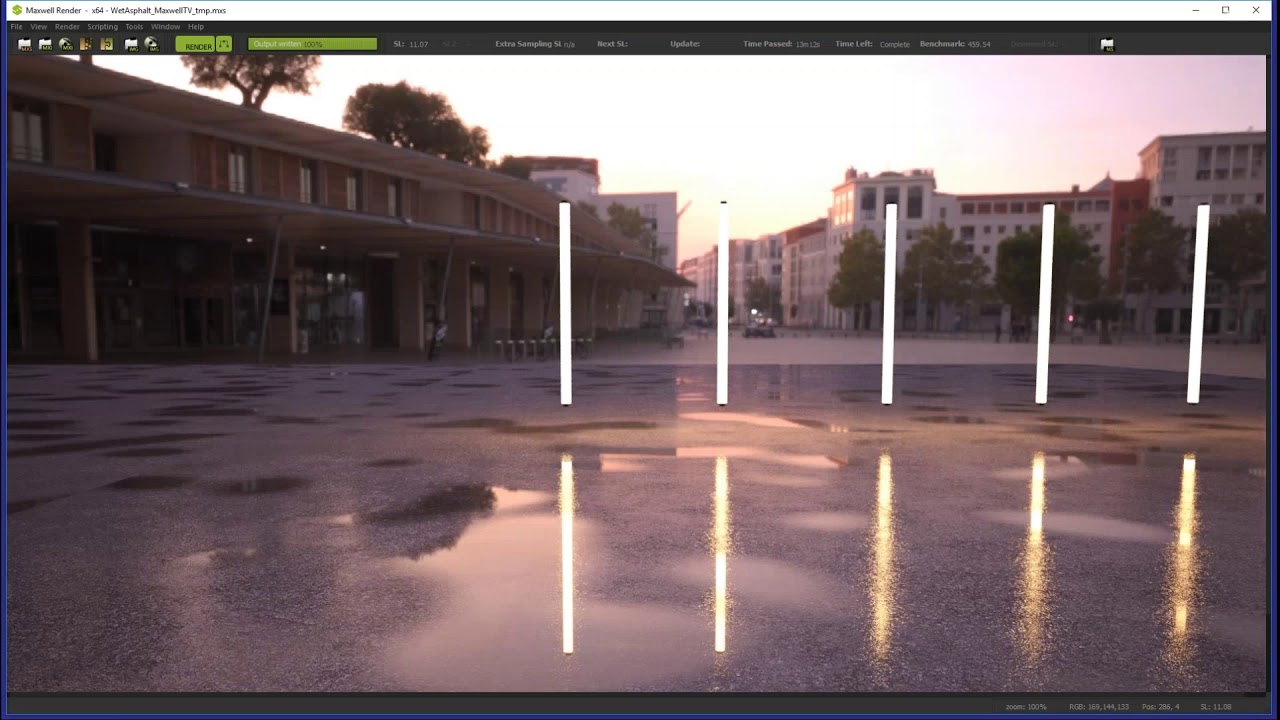
Wet Asphalt Material with Puddles in Maxwell
Learn how to create a lovely Wet Asphalt Material, complete with puddles, in Episode 1 of the Next Limit Maxwell TV webinar.
More...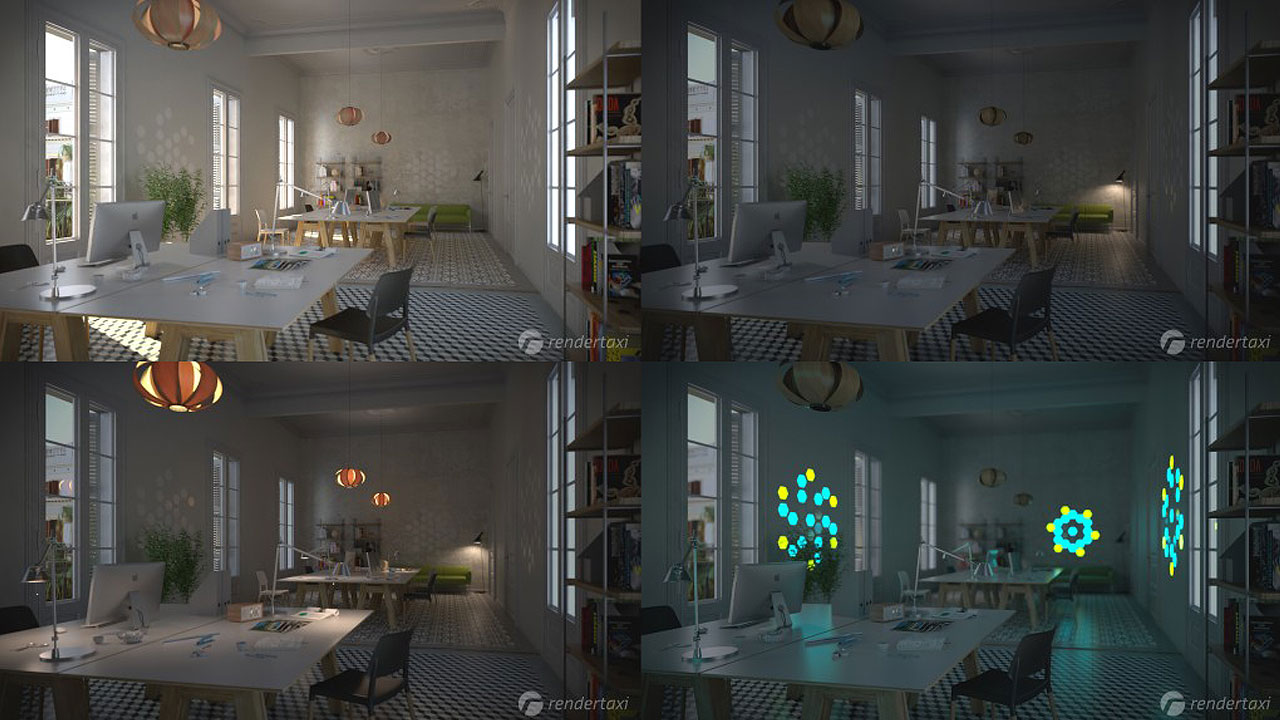
Multilight - Maxwell Render
Save an infinite number of images under different lighting conditions with just ONE render? Make lighting animations from a single render? No extra render time? This is Multilight!
More...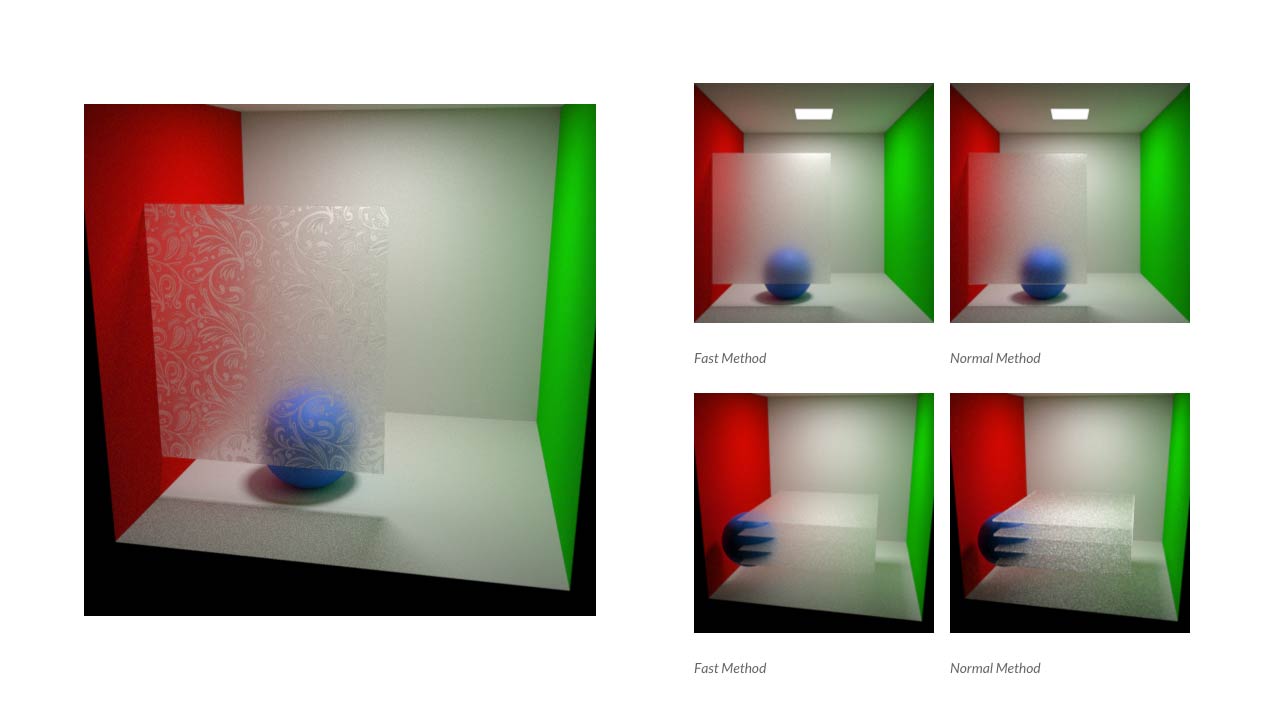
An Efficient Method for Rendering Frosted Glass
If you’ve ever tried to make glass or frosted glass, depending on your method, the render hit can be substantial. Tom from Next Limit explains some cool methods using Maxwell Render.
More...





